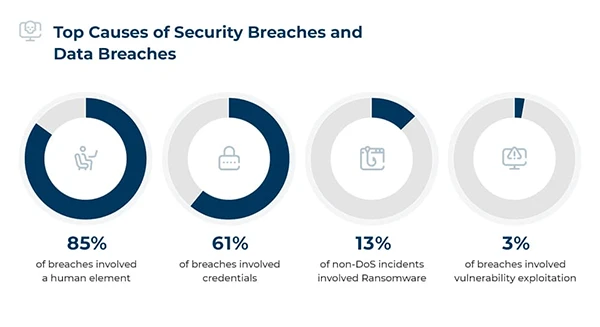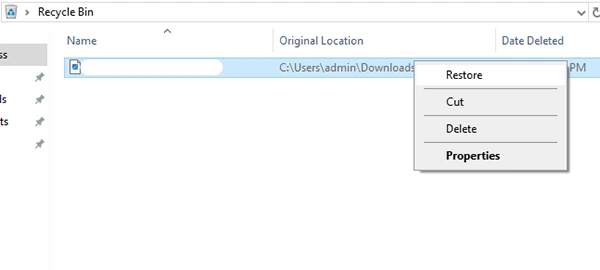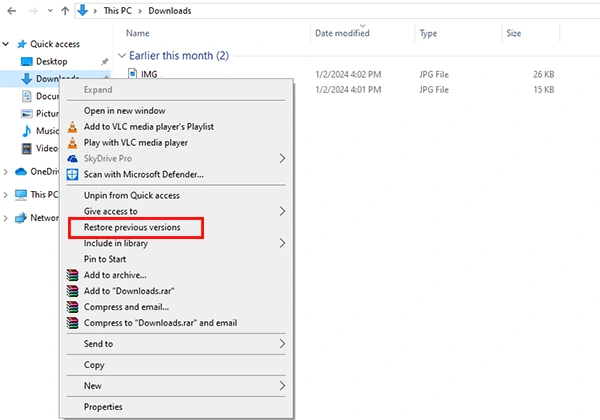We all live in a world where data or a piece of information is being created repeatedly. But, imagine, what if you lost all that precious data? Just thinking about it would give you chills, right?
However, you don’t need to be disappointed, as you can get that data back! Yes, you heard right. Technology has given rise to many possibilities, and data recovery is one of them. These technologies take different approaches to data resurrection, like the reliable Canadian data recovery services.
That is why today we are going to take a look at the comprehensive guide to data recovery. This guide will explore the various methods of data recovery and the main causes of data loss. So, let’s head straight in!
Data recovery is the process of retrieving lost data. This loss can be caused by physical damage or system damage. Many system errors are also the cause of these cases.
There are various methods to recover lost or deleted data, but data recovery software remains the top choice of people and IT professionals as it offers the ease of getting back the data within a few clicks.
If you are wondering how these software programs find the lost data in a few seconds, then let’s see how it does that: The software uses a variety of methods to analyse files and folders, search for familiar files, and use raw techniques to locate the data within the system.
As we talked about above, data loss can occur due to a variety of reasons. These reasons for data loss severely impact the business, where the most common cases include:
It is considered to be the most common case as to why people lose their data.
Maybe, you were just trying to do some other tasks, but you accidentally added the files to the trash bin. Many people also mistakenly format the drive or the system without having a prior backup.

The above image shows the top causes of security and data breaches.
If you lose the data from the hard drive or USB drive, the data recovery software can somehow retrieve the data. However, if you permanently delete all the files, there’s no going back.
Although the professionals will be able to reconstruct the files based on the fragments, the files will lose their originality.
Cyberattacks have been the talk of the town since the introduction of digitalization. These attacks can be ransomware, malware, or hacking instances. In ransomware or hacking instances, attackers steal your data and hold it as a ransom to demand money.
Computer hardware is very complex, and it could fail due to various reasons such as water damage, or a failed hard drive in the system. These failures could also lead to corrupted files.
Viruses, malware, or power outages are known to be the main cause of system errors. When the system gets damaged, the files become damaged or corrupted, resulting in being incomprehensible.
Oftentimes, the software gets outdated and leads to the corruption of files. It happens because the software tends to freeze and crash after functioning for a long period, which damages the files.
When you try to format the files on the drive, you end up accidentally deleting all the files. Some of those files don’t have a backup and get lost forever.
We know it’s no use to cry over the spilled milk. However, you can adopt effective practices to make sure it doesn’t happen in the future. Hence, we will discuss some tips that you can use to minimize the aftereffects of data loss.
If you find that you have lost some data from your device, you must immediately stop using it. The reason for this is that your new activities will overwrite the lost and damaged files, and you may never be able to get those files back.
This is mostly recommended on the occasions when your files get encrypted by cybercriminals. Disconnect from any device or network that you are connected to. By doing this, you can prevent the other devices from getting infected and make it way easier to resurrect the data.
If you are looking for the most reliable way that prevents the cases of data loss, then you should keep a backup of files. You can store this backup on Cloud storage or the local services.
The above image shows the top areas covered by the organization in the data recovery plans.
Regardless of your choice, it is guaranteed to save you a lot of trouble. So, make sure to keep backups and stay ahead of the cybercrime trends.
Moving forward, let’s discuss how you can recover your lost data. There are various methods for that, which include using the recycle bin, control panel, or data recovery software. Let’s look at them in detail:
The first basic step is to look for the deleted files in the recycle bin, as it stores the deleted files that are less than 30 days old. Look for the file by size and date.
If you find the desired file, right-click on the file and select restore from the menu bar that popped up.

You can also search for the lost files in the Windows search bar, as it will locate the file if it is in an unexpected place. Click on the Type here to search on the Control panel and enter the file’s name.

If you are using an operating system, then you can also use the in-built recovery tools. Here’s how you can use these tools to resurrect data:
There is a feature on Windows: Restore Previous Versions that helps to restore the previous versions of files on Windows. Here’s how you can use that feature:

The macOS has the time machine feature as the built-in recovery tool. To use that:
You can also use a variety of third-party software to enjoy the benefits of data recovery. These programs have both paid and free versions. But, it’s not always necessary to spend your money when you can enjoy the same benefits with the free version.
Some of the free data recovery programs include Recuva, Disk Drill Pro, and EaseUS Data Recovery Wizard. Take the help of these programs and get back your data with a few clicks.
If the above methods fail to recover your lost data, you can seek professional help from professional data recovery services. Those people have skilled expertise in the IT field and use advanced techniques to help you.
However, remember that these services don’t guarantee the restoration of data, as sometimes the files are corrupted to a severe level. These services can also be expensive, depending on the severity of the damage. So, make sure to do your research!
Losing your sensitive data is a huge disappointment and causes a lot of stress. That’s why you need to adopt backup practices to protect the data and keep it safe from digital threats.
Follow the aforementioned methods to resurrect your lost data and seek professional help if the matter gets out of hand.
Firstly, try to locate your lost files in the recycle bin and the trash. You can easily restore your files from there. However, if it doesn’t work, seek third-party data recovery software or professional data recovery services.
Install the third-party data recovery software and use it to locate the lost files, or contact the professional services if you find it troublesome.
The best way to protect your files is to make a backup of your files. You can store the backup on local backup or Cloud backup.
If you lost the data from the hard drive, you would have to call a professional data recovery service.
The data recovery software has both free and paid versions. If you are looking for the paid version, it will cost you around $89. We advise you to conduct thorough research on the software’s plans and conditions.
